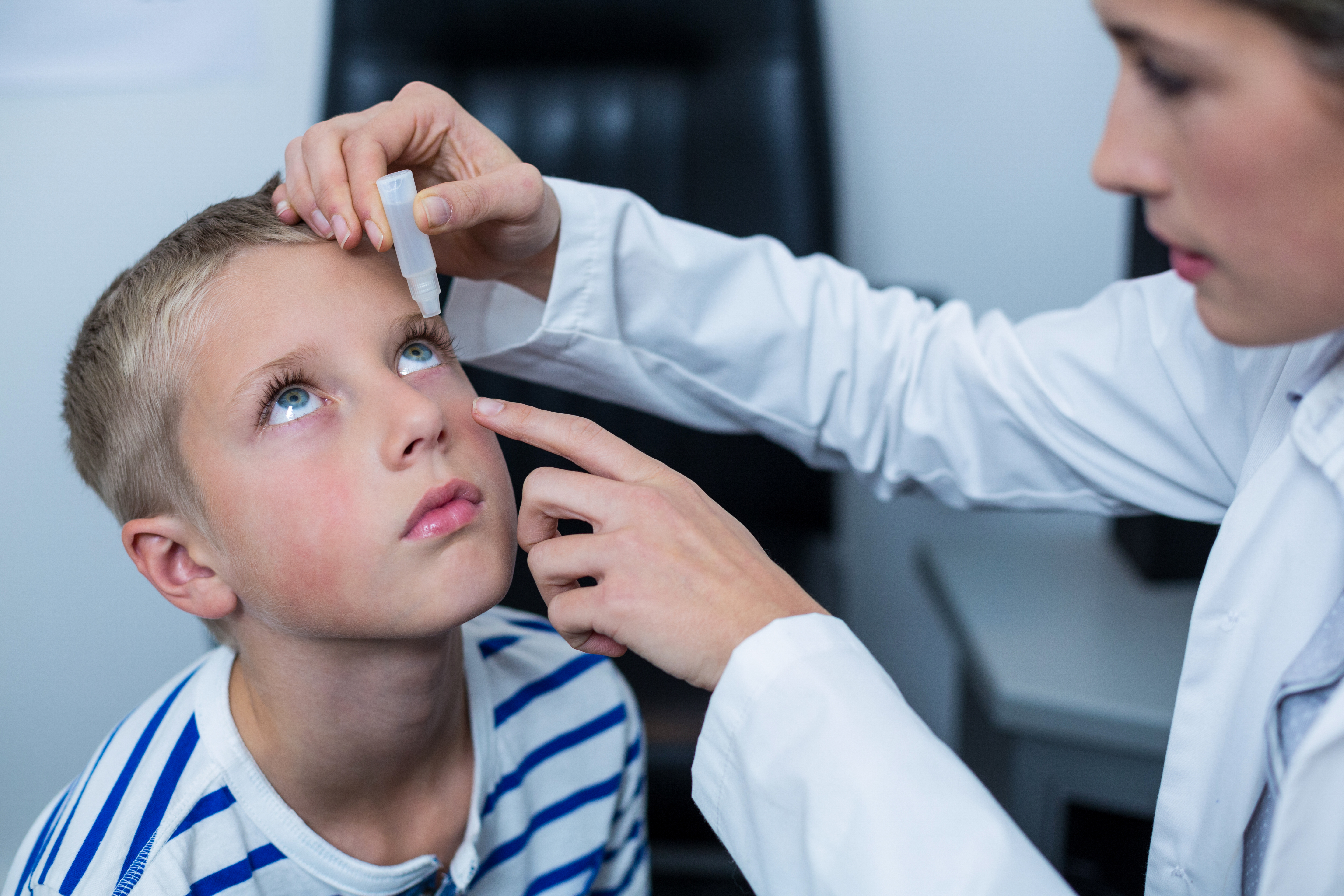 |
An inconsistent and wide array of formulation and labeling practices exist for compounding 0.01% atropine prescribed to slow pediatric myopia progression. Photo: Getty Images. |
Low-concentration atropine has been shown to slow myopic progression, but the medication thus far can only be obtained through compounding pharmacies, which don’t have to adhere to the same level of rigorous testing and practices as commercial drug manufacturers working under FDA requirements. In a recent study, researchers aimed to describe the labeling, packaging practices and characteristics of compounded atropine 0.01%. They found a troubling amount of variation across pharmacies.
Parents of children who had previously been prescribed atropine for myopia management were randomized to obtain a 0.01% formulation from one of nine compounding pharmacies. A total of 24 products were analyzed for various important quality attributes, and the main outcomes were labeling practices, the concentrations of both atropine and the ingredients that cause it to degrade, pH, osmolarity, viscosity and presence of excipients (e.g., stabilizing agents) in the samples.
The median bottle size was 10mL (range 3.5mL to 15mL), and eight of nine pharmacies used clear plastic bottles. Storage recommendations varied and were evenly split between refrigeration (33%), room temperature (33%) and a cool, dark, dry location (33%). Expiration dates ranged from seven to 175 days (median, 91 days). Median pH of samples was 7.1 (range 5.5 to 7.8). The median measured concentration relative to the prescribed concentration was 93.3% (70.4% to 104.1%). Notably, one quarter of samples were under the 90% minimum target concentration of 0.01%.
Only one of the pharmacies analyzed in the study stated that they were registered as a 503B outsourcing facility, and four stated that they were accredited by the Pharmacy Compounding Accreditation Board (PCAB). In their paper for Eye & Contact Lens, the authors explained that “the PCAB has a credentialing process, including on-site assessments of compliance with their compounding quality standards; however, their website listed three of the four pharmacies as having current certification.”
Compounding pharmacies are not required to follow the same labeling requirements of FDA-approved drugs, such as placing accurate labeling of a medication to understand its proper use and storage. “The one pharmacy that labeled with a 14-day beyond use date used a 10mL bottle, which would last approximately three months. This labeling is likely confusing to patients, who are unlikely to dispose of the remaining medication after 14 days,” the authors explained.
All but one pharmacy used clear plastic bottles, with one using an opaque plastic bottle. “FDA-approved 1% atropine sulfate ophthalmic solution is sold in opaque plastic bottles, presumably to protect against degradation from light. One third of the pharmacies stated on their package labeling to store in a dark place, but the remainder were silent as to light exposure,” the authors noted. “Only a third of pharmacies recommended refrigeration on their labeling.”
Twenty percent of samples had impurities higher than 10%, which the authors suggested could have come from poor source materials, leaching from the bottle or other contaminants during the compounding process.
Guidelines put forth by the FDA and PCAB require actual concentrations of active ingredient to be within 10% of the prescribed/labeled concentration, but one quarter of the samples were below that. “Given the modest slowing of axial elongation by 0.01%, it is concerning that this already low concentration was not achieved in a large percent of samples,” the authors wrote in their paper.
FDA-approved atropine 1% is buffered to a pH between 3.5 and 6. “At higher pH levels, atropine degrades faster, and the primary degradation product—tropic acid—has no antimuscarinic properties,” the authors wrote.
“In this study, there was a significant correlation between pH and tropic acid; the samples with the lowest tropic acid levels generally had a pH of 5 to 6,” they explained. “Thirteen percent of samples had tropic acid concentrations more than 8% just one month from receipt. Given that most supplies were expected to last at least three months, further degradation would likely occur. The tropic acid limit for ophthalmic atropine sulfate solution within the US Pharmacopeia is 7%.”
Not surprisingly, the authors suggest that further research is needed to support the best practices for compounding low-concentration atropine.
Richdale K, Skidmore KV, Tomiyama ES, Bullimore MA. Compounded 0.01% atropine—what’s in the bottle? Eye Contact Lens. April 5, 2023. [Epub ahead of print.] |


